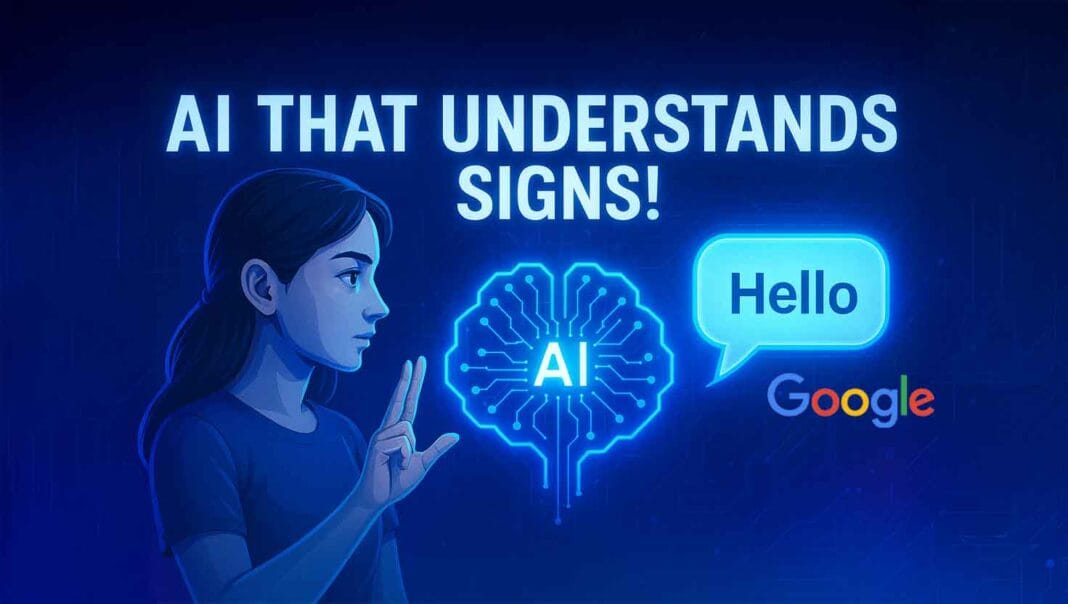Google Just Gave Voice to the Silent (SignGemma)— Big Tech’s Most Human Innovation Yet
In a groundbreaking move at Google I/O 2025, Google unveiled SignGemma, an AI model designed to translate sign language into spoken text in real-time. This innovation aims to bridge communication gaps between the Deaf and hearing communities, marking a significant step toward inclusive technology.
What Is SignGemma?
SignGemma is part of Google’s Gemma family—a series of open, lightweight AI models. Specifically trained to understand, interpret, and vocalize sign language, SignGemma operates in real-time, offering immediate spoken responses. Unlike previous tools that provided delayed translations, SignGemma ensures seamless communication by capturing gestures, facial expressions, and body language nuances.
“We envision a world where communication barriers no longer exist — SignGemma is a step toward that future.”
— Sundar Pichai, CEO, Google
Key Features
Real-Time Translation
SignGemma recognizes signs, gestures, facial cues, and subtle finger movements, instantly translating them into speech or text.
Offline Functionality
Built on the Gemini Nano platform, SignGemma can function without internet connectivity, making it ideal for use in areas with limited access.
Multilingual Support
While initially optimized for American Sign Language (ASL) and English, plans are underway to support other sign languages, including Indian Sign Language (ISL) and British Sign Language (BSL).
Open-Source Accessibility
Google plans to release SignGemma as an open-source model, encouraging developers and researchers to build upon it and create applications that enhance accessibility for the Deaf and hard-of-hearing communities.
Demonstration Video
To see SignGemma in action, check out this demonstration:
In this video, the AI translates sign language into spoken text, showcasing its real-time capabilities and potential impact on communication.
Real-Life Applications
Healthcare: Enable Deaf patients to communicate effectively in emergency rooms without the need for interpreters.
Education: Facilitate inclusive classrooms for both hearing and non-hearing students.
Retail & Public Services: Allow service desks to interact seamlessly with all customers.
Virtual Meetings: Break communication barriers in interviews and online meetings.
Mobile Applications: Integrate SignGemma into apps like WhatsApp or Google Meet for live sign-to-speech translation.
SignGemma utilizes a multi-modal neural network, combining:
Pose estimation for gesture tracking
Facial expression analysis for contextual understanding
Large language models (LLMs) for generating accurate voice translations
This combination ensures that SignGemma not only translates signs but also understands the context and nuances behind them.
🤝 Join the Movement
Google is inviting:
Developers to expand support for new sign languages
Deaf communities to co-create and test real-world solutions
Startups to build accessibility tools powered by SignGemma
📬 Interested parties can sign up for early access and testing here: goo.gle/SignGemma
📚 References
Also read: Google Veo 3 Just Declared War on Hollywood


